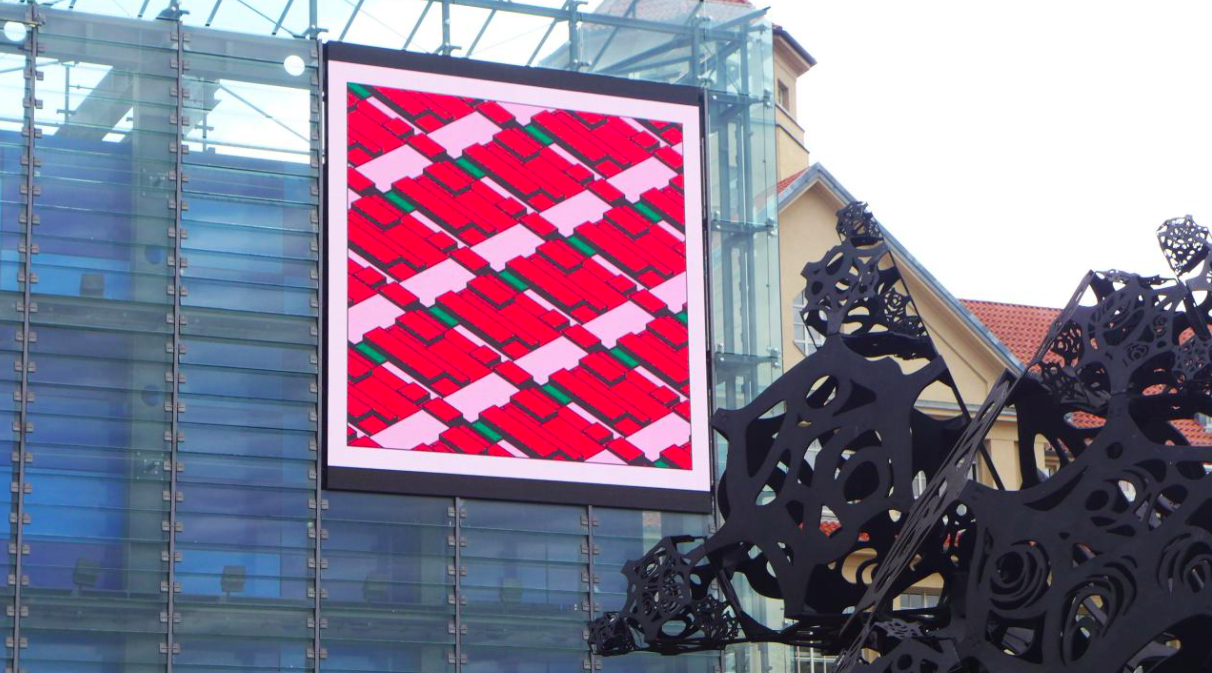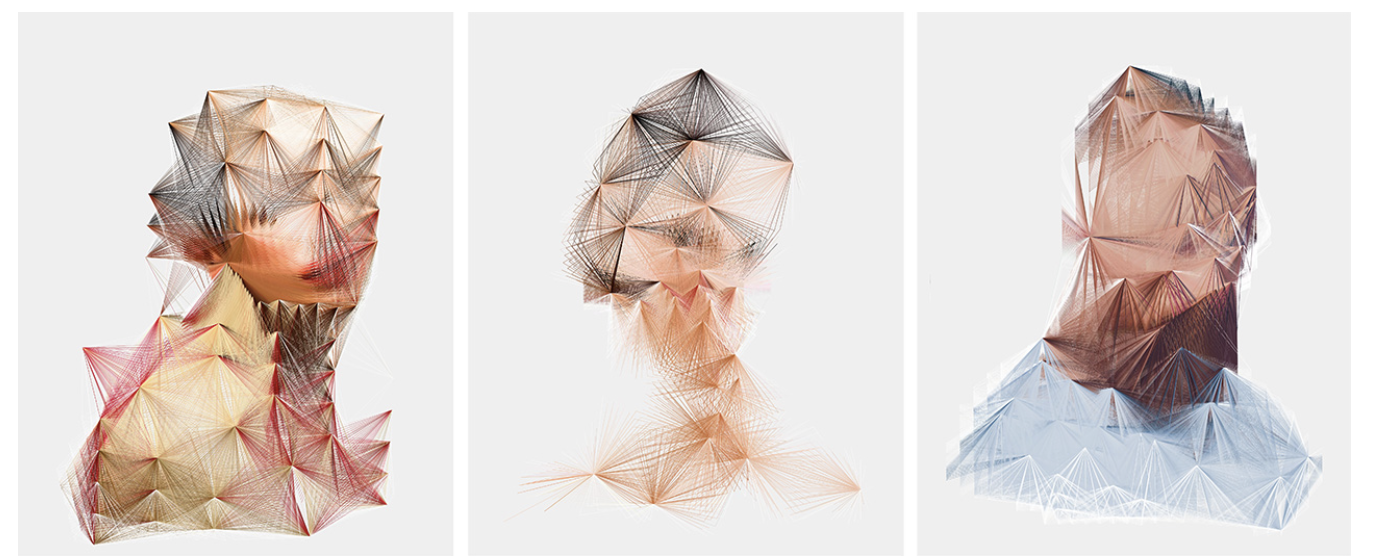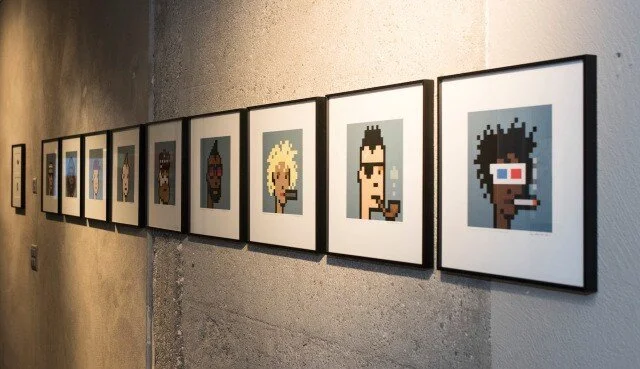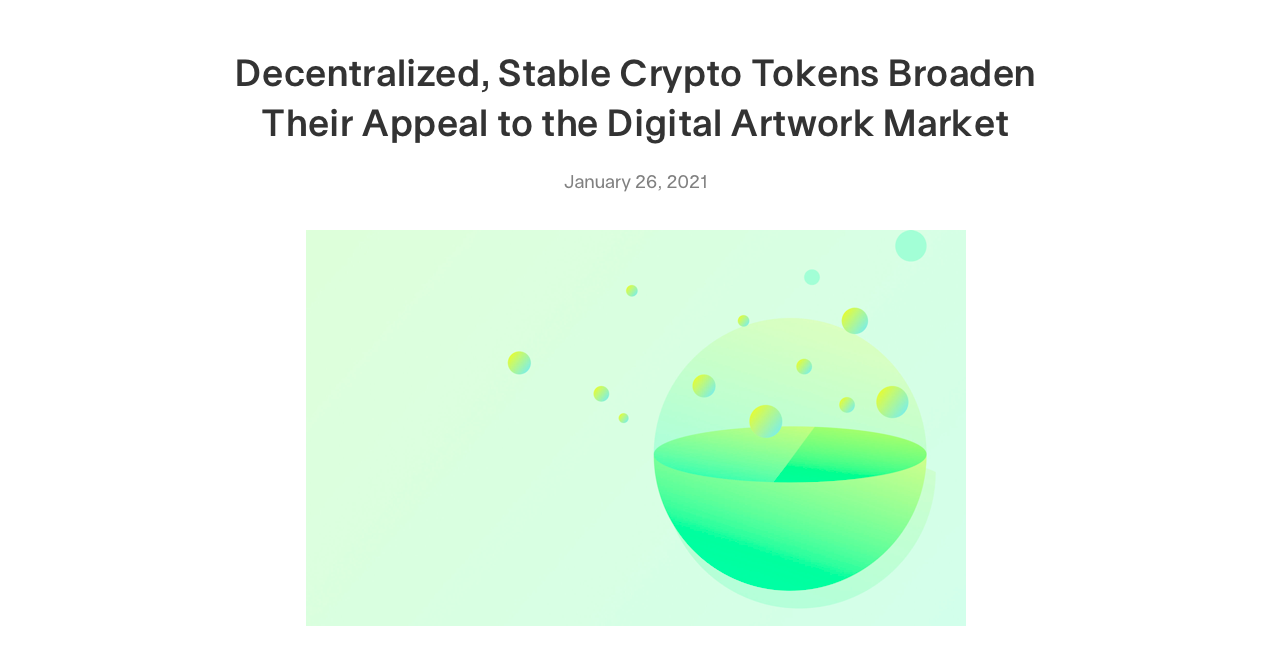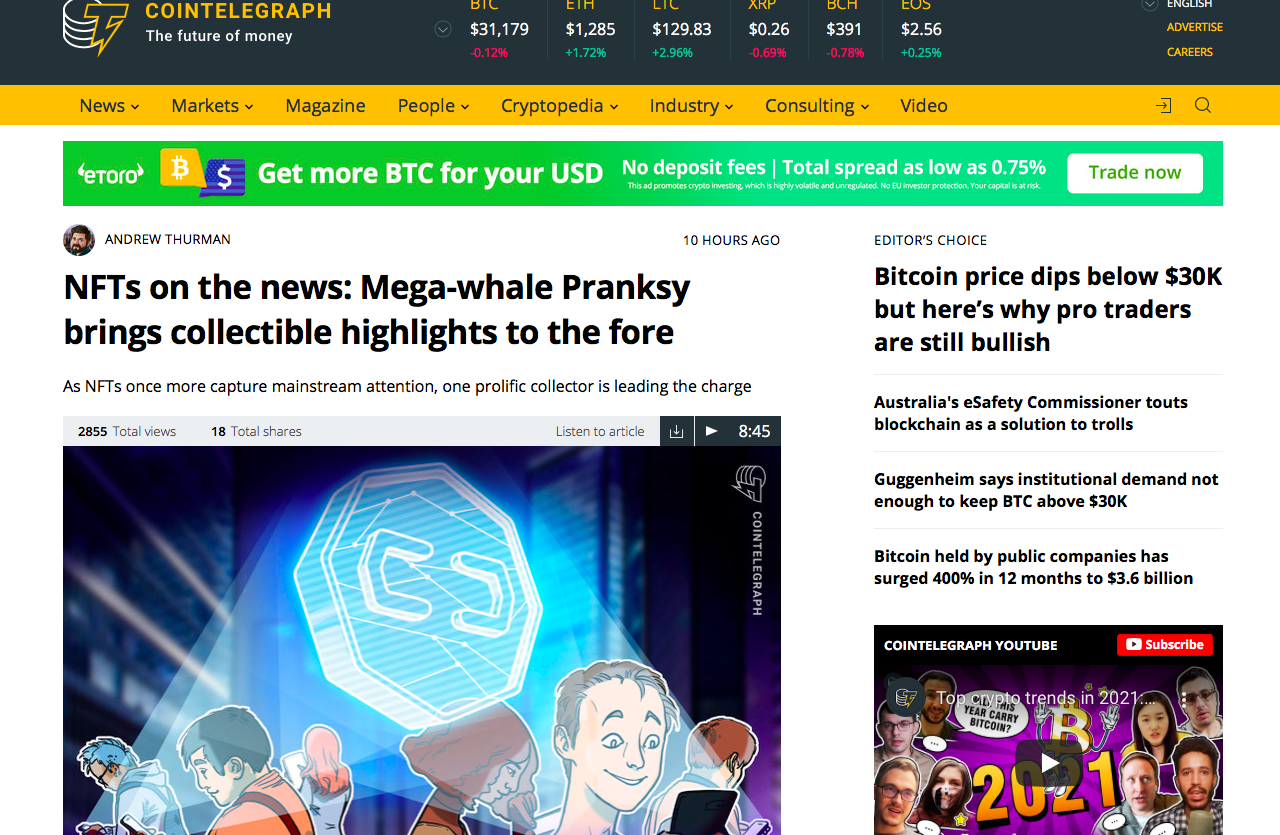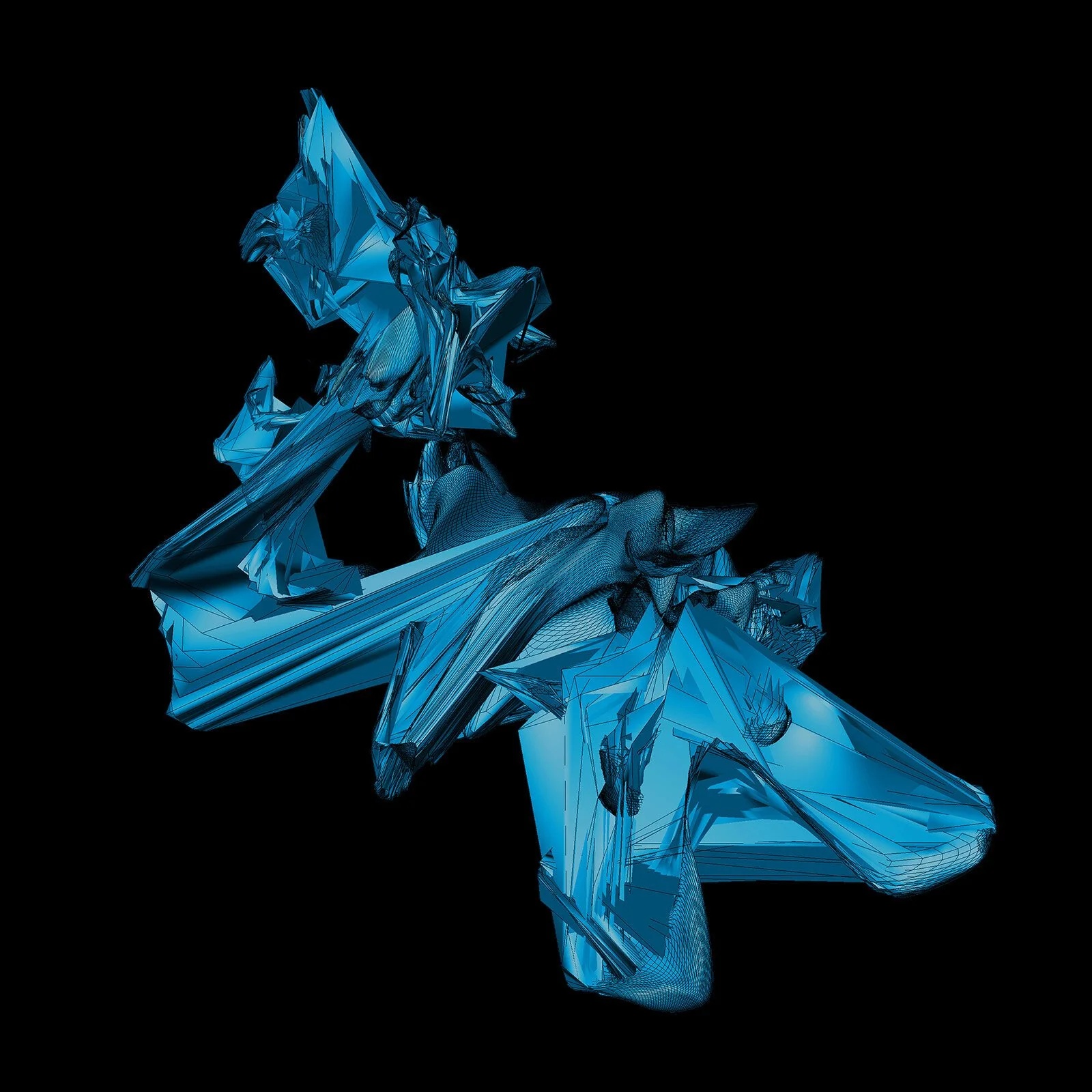CryptoArt on the ZKM Cube
April 7 – June 6, 2021, daily 9am-11pm
Since 2014, it has been possible to certify digital images with the help of blockchain technology and in this way produce unique items, so-called NFTs (Non-Fungible Tokens). But only since this year, after a number of digitally certified images were sold for several million dollars, has a broader public taken notice of this development.
The ZKM already acquired a number of NFTs in 2018 and is now showing a selection of works from its own NFT collection as well as from private lenders on the cube screen.
View gallery HERE.
Blockchain technology – originally developed to create a digital equivalent to cash using cryptographic processes – is changing the economics of digital art. Digital works that can be copied infinitely at any time can now be transformed into unique pieces or limited series. The logic of scarcity and the rules of the traditional art market are transferred to the digital world. Beyond that, however, technology also opens up new possibilities. So-called »smart contracts« embedded in the blockchain can, for example, ensure that artists automatically receive a certain percentage of the sales price on their cryptocurrency account every time one of their works is resold. Because every piece of information in the blockchain is authenticated decentrally by thousands of computers, all transactions are transparent and unchangeable.
Source & Credits: https://zkm.de/en/exhibition/2021/04/cryptoart
ECOSISTEMI TECNOLOGICI | L'ARTE GENERATIVA DI SOFIA CRESPO
We recommend this nice article by Radar Magazine about Sofia Crespo work!
Here the link to the full version (italian only): https://www.radarmagazine.net/2021/03/31/sofia-crespo/
CNN Business | NFTs have completely transformed these digital artists' lives
CNN's Jon Sarlin talks with Carlos Marcial and Osinachi, two of the many digital artists around the world who have seen their lives turned upside down with the booming market for NFTs —the digital tokens that have fueled the rise of an unprecedented market for digital art.
Full video available here.
Kate Vass Galerie’s Blockchain Journey From NFTs To Virtual Worlds by Jing Culture & Commerce
An early crypto adopter, Kate Vass Galerie has shown the works of digital pioneers such as Kevin Abosch, and last year, launched its first exhibition, a showing of Espen Kluge's generative portraits, on Somnium Space (above). Image: Kate Vass Galerie.
Kate Vass remembers a time about four years ago, when she encountered an online community that was modest yet inviting. “It was humble, it was friendly,” she tells Jing Culture & Commerce. “Everybody was very supportive towards each other.” It was the nascent crypto art scene, made up of emerging artists, curators, and blockchain platforms, and glued together by a shared ambition to democratize the art industry. Effectively, these early crypto players would lay the foundations for an alternative, creative economy unbound by gatekeeping and largely untouched by the media spotlight.
While the crypto art space today remains powered by the same spirit and enterprise, the past few months have completely transformed the stakes. A rush for non-fungible tokens (NFTs) — intensified by celebrity involvement, pandemic-fueled speculation, and one blockbuster Christie’s sale — has cast the crypto marketplace in sharp relief, with buyers and investors piling on and driving up the demand and market value of digital collectibles. For Vass, an early crypto adopter, it’s an equally encouraging and exasperating circumstance. “Watching people cash out as much as possible without really thinking how it may impact the whole industry,” she says, “it’s very frustrating.”
As part of his 2018 project IAMA Coin, Kevin Abosch produced 100 physical works — foil pouches containing his blood and printed with a blockchain address — and 10 million virtual tokens. Image: Kate Vass Galerie
And the gallerist knows what she’s talking about. In 2017, she launched Kate Vass Galerie in Zürich, and swiftly found a niche at the intersection of art and cutting-edge technology where she could “build up something valuable that reflects our times.” 2018’s Perfect & Priceless was one such endeavor; billed as Switzerland’s first blockchain art exhibition, it arrayed the works of such pioneering digital creators as Rob Myers, Cryptopunks, and Terra 0, and showcased Kevin Abosch and Ai Weiwei’s collaboration, “PRICELESS,” which interrogated the value of intangible art.
Other presentations exploring artificial intelligence and generative art followed, before Vass decided, in 2019, to enter the NFT fray. The occasion: a solo showing of Norwegian artist Espen Kluge’s generative portraits, during which some works were sold as physical limited edition prints, and five were tokenized on SuperRare and OpenSea. While traditional art collectors purchased the physical pieces at the exhibition, “different types of collectors who were already familiar with crypto,” says Vass, went on to acquire the NFTs on the blockchain platforms after the opening.
According to her, the challenge of entering the NFT market then lay not in tech adoption barriers — platforms like OpenSea are exceedingly user-friendly — but in shifting the mindsets of those who buy and collect. “I’m always trying to challenge the collector,” she says, adding that she’s emphasized tying physical assets to a digital footprint. “I support the idea that both are important,” she says. “Both should come as a bundle, so you can be more flexible as a collector, should you wish to exhibit the work in a different way.”
If such advice was friendly pre-pandemic, it’s practically essential now as art businesses rush to rally around digital in a bid to reach socially distant buyers. NFTs do open a new and necessary revenue stream for cash-strapped organizations, though Vass warns of diving in without first considering the calibre of art on offer, the environmental cost, and the impact on the existing crypto economy. “It should make sense for the artists and the community. If it doesn’t make sense, don’t do it,” she says. But for galleries serious about NFTs, these digital assets can provide significant support, as their existence on the blockchain alleviates storage, secures provenance, and facilitates transactions.
Last year, Vass’ gallery embarked on a new phase of its NFT venture: occupying virtual land. Like any other NFT, these decentralized lands or digital real estate can be purchased, sold, or leased, and on which users can develop a virtual reality of their own. In virtual worlds like Cryptovoxels and Decentraland, landowners have unveiled 3D creations, monetized games, and yes, showcased art. For players of world-building games like Animal Crossing or Occupy White Walls, none of this should sound unfamiliar. In May 2020, Kate Vass Galerie’s plot in Somnium Space hosted a solo Kluge exhibition, offering a rich digital counterpart to match the artist’s 2019 physical show.
Vass is effusive about the opportunity. Somnium Space, she says, is “a beautiful platform. You have so many different features and you really do feel like you are on Mars. It’s a completely different experience.” Yet, because partaking in these worlds requires the use of virtual reality headsets, she concedes the barriers to participation will be tougher to overcome; plus, post-pandemic, “people will like to be physically present in physical spaces.” Then again, as mainstream attention swivels ever more heatedly onto NFTs, the virtual land community might just be due for some new visitors. And Vass, once again, is already there.
all the pictures and full article here:
https://jingculturecommerce.com/kate-vass-galerie-crypto-art-nft/
Writing the History of the Future - The ZKM Collection
In the twentieth century technical media radically transformed the image. Beginning with the scandalous medium of photography, in which images seemingly generated themselves, media »transformed the entire nature of art« (Walter Benjamin). Photography, film, phonography, radio, television, video, computers, and the Internet have redefined the relationship between artist, work, and viewer as well as our notion of the creative act. The exhibition Writing the History of the Future exemplifies the transformation of art due to the changing technologies of production, reception, and distribution. It also shows how artists anticipate media and social practices that will only become self-evident for society in general years later. As the title of the exhibition says, they write the history of the future.
CRYPTO-ART PIONEER KEVIN ABOSCH DROPS “1111” 23rd MARCH 2021
Conceptual artist and crypto-art pioneer Kevin Abosch made headlines across the globe in 2018 with his groundbreaking work IAMACOIN as the first person to tokenize himself in the form of 10 million ERC-20 tokens on the Ethereum blockchain.
Later that year his work YELLOW LAMBO, a yellow neon sculpture comprised of 42 alphanumerics was sold to the former COO of Skype for US$400,000, more than the cost of an actual Lamborghini Aventador automobile. The sculpture was informed by Abosch’s non- fungible token (NFT) YLAMBO, also in 2018.
On the 23rd of March, 2021 Abosch will bring his project 1111 to OpenSea, the largest NFT marketplace. This work has been shrouded in secrecy for over a year and is related to a body of work entitled Hexadecimal Testimony, described on Abosch’s official website as:
“Cryptographic keys, some truncated, sublimate into a lingual arcana and a repository of sacred knowledge.”
Fans and collectors of the artist’s work are treated to occasional tweets that suggest the work is any thing but ordinary: “Do you collect the art, or does the art collect you?” / “Never fear art!” / “Please pay attention.”
Abosch has revealed that his colorful and varied grids of cryptographic alphanumerics are “embedded with emergent intelligence.” The NFT is on the Ethereum blockchain and the content and metadata are stored on the Arweave Permaweb.
“A number of surprises and features including a DAO (decentralized autonomous organization) will be revealed over time,” Abosch explains.
The latest information about the 1111 drop can be found on the artist’s twitter page @kevinabosch, by joining the Telegram channel t.me/nft1111 and on the official 1111 site kevinabosch.com/1111.
For further information please contact info@katevassgalerie.com
Aesthetics of the Commons: book launch and discussion
We are glad to announce the online launch of the new book ‘ Aesthetics of the Commons’, hosted by Depot in Vienna
(zoom link below).
Aesthetics of the Commons. Cornelia Sollfrank, Felix Stalder and Shusha Niederberger, eds. 2021.
Zürich Berlin: Diaphanes
(available as softcover or open access PDF: https://diaphanes.net/titel/aesthetics-of-the-commons-6419)
‘What do a feminist server, an art space located in a public park in North London, a ‘pirate’ library of high cultural value yet dubious legal status, and an art school that emphasizes collectivity have in common? They all demonstrate that art can play an important role in imagining and producing a real quite different from what is currently hegemonic; that art in the post-digital has the possibility to not only conceive or proclaim ideas in theory, but also to realize them materially. The underlying social imaginaries ascribe a new role to art in society and they envision an idea of culture beyond the individual and its possessions.
Aesthetics of the Commons examines a series of artistic and cultural projects—drawn from what can loosely be called the (post)digital—that take up this challenge in different ways. What unites them, however, is that they all have a ‘double character.’ They are art in the sense that they place themselves in relation to (Western) cultural and art systems, developing discursive and aesthetic positions, but, at the same time, they are ‘operational’ in that they create recursive environments and freely available resources whose uses exceed these systems. The first aspect raises questions about the kind of aesthetics that are being embodied, the second creates a relation to the larger concept of the ‘commons.’ In Aesthetics of the Commons, the commons are understood not as a fixed set of principles that need to be adhered to in order to fit a definition, but instead as a ‘thinking tool’—in other words, the book’s interest lies in what can be made visible by applying the framework of the commons as a heuristic device.’
Contributions to the book by Christoph Brunner, Daphne Dragona, Jeremy Gilbert, Olga Goriunova, Gary Hall, Ines Kleesattel, Rahel Puffert, Judith Siegmund, Sophie Toupin, Magdalena Tyzlik-Carver.
Online event: Tuesday, 9 March 2021, 7 pm (CET).
With:
Olga Goriunova, cultural theorist, Royal Holloway University, London.
Shusha Niederberger, artist, researcher, and educator, Zurich.
Gerald Raunig, philosopher, Malaga/Zurich.
Cornelia Sollfrank, artist and researcher, Berlin.
Felix Stalder, cultural and media theorist, ZHdK, Zurich.
The event will be held in English.
Link to zoom meeting (will be active at 6.45 pm):
https://us02web.zoom.us/j/82459911204?pwd=Y0FscUMwS1c5QmNtSmxTZ2JmMW9Xdz09---
Kate Vass at DC Finance's Blockchain, Cryptocurrency and DeFi Family Office Conference
"DC Finance's Blockchain, Cryptocurrency and DeFi Family - Part 2 Office Conference"
Date Time: Mar 3, 2021 11:00 AM Eastern Time (US and Canada)
We are looking forward to speak at DC Finance's Global Family Office & High Net Worth Community 'Blockchain Online Conference' next week on March 3rd at 14:10 AM (EST) or at 20:10 (CET)
– www.nyc-blockchain.com
Priyanka Desai Derek Edward Schloss & Kevin ABOSCH we will be focusing on the following topic:
'How are NFTs (Non Fungible Tokens) remaking the marketplaces and creating new business opportunities. What are these digital assets and why are they responsible for the current growing trend of dynamic changes in collectibles? What is behind the thesis that they are/will play an important role in new business models for artists , sports clubs and players as well as real estate and the capital markets. These are just examples of the possibilities of NFTs. On January 24th, 2021 a crypto cyber punk sold for $740,000. What is going on and what can we expect?'
DCF is a leading financial conference organizer reaching over 1,000 families worldwide representing over 300 Billion USD. In the US alone the firm reaches over 400 families representing 200 Billion USD.
To register, please press here: https://lnkd.in/dPNzv8C Code 200
Art Dubai 2021
The upcoming edition of the fair will take place in an adapted format with 50 galleries from 31 countries, showcasing a diverse selection of artworks, artists and practices that reflects the multicultural identity of the city. Art Dubai 2021 will be held from 29 March to 3 April at Dubai International Financial Centre (DIFC) in a purpose-built structure that will ensure the highest safety protocols, creating a secure, safe and flexible environment for participants and visitors.
Learn more about Art Dubai 2021 here.
Blockchain art?
“Rather than money issued by a nation and administrated by central banks, art is a networked, decentralized, widespread system of value.” (Hito Steyerl)
In 2018, we were the only art gallery dealing with blockchain art, exhibiting this movement's protagonists like Kevin ABOSCH Larva Labs Rob Myers and many more at the very first blockchain exhibition Perfect & Priceless - values of systems. I am happy to see our collectors who followed the gallery's artists and bought at the right time are now successful investors.
For the last few weeks, in the art market, we have seen a tremendous shift towards NFTs and everyone wants to own a pioneer's works, but there are no so many. With the Christie's auction sale this week of the NFT art and 1.2mio USD sale of digital crypto punk, there is no doubt that the market has embraced NFTs as fine art.
In 2019 we have exhibited unique physical punks at CADAF in NY, where we had Winklevoss twins buying one to their collection. Same year, another project by Larva Labs have been exhibited at Kate Vass Galerie - Autoglyths. Autoglyphs are the first “on-chain” generative art on the Ethereum blockchain. There were only 4 physical works and the digital ones were sold out within 1.5 hours.
Another talented pioneer blockchain artist Rob Myers, has been working with blockchain since 2014 and have created fascinating conceptual art works. Myers from New York is visualizing crypto currency transactions in his continuing series Blockchain Aesthetics while referencing concept art from the 1970s. In order to transmit crypto from one wallet to another wallet (peer to peer), a hashrate is being generated and compressed through a mathematical encryption method. The hashrates are always the same length independently from the size of information they contain. The artist renders Bitcoin transactions as rows of coloured squares or circles. Each byte of the 32-byte transaction is rendered as a square or a circle of a 256-colour palette. The transactions are being displayed on a monitor as colourful abstract moving images with a narrative context. Although the imagery reminds us of 4096 Colours by Gerhard Richter or the spot paintings by Damien Hirst, they have a different connotation. There were only four physical works ever produced and all of them exhibited at KVG and Cadaf the following year.
A common appetite for an art investment among Millenial art collectors and new principles in token economics have inspired world-renowned Irish artist Kevin Abosch to turn himself into cryptocurrency back in 2018. "We come into the world like newly minted coins - perfect and priceless. Yet we are constantly being ascribed a value." Abosch explains. He created 100 physical artworks and a limited edition of 10 million virtual artworks entitled IAMA Coin. The material works are stamped using the artist's own blood, with the contract address on the Ethereum blockchain corresponding to the creation of the 10 million virtual works. The virtual works are standard ERC-20 tokens, and token owners are free to share these artworks and even divide them into smaller pieces before sharing. We consider Kevin the only real "NFT artist" because his NFTs in 2018 were the actual art. Meaning there were no connected media- the actual unique TOKEN is art. Back in 2018-03-15 l 2018-03-27, he has created both YLAMBO & MDAV ('MAGEN DAVID). Interestingly, none of those was sold except YLAMBO inspired the Yellow Lambo neon sculpture, which was exhibited at Christie's London and then privately sold to Skype COO Michael Jackson for $400k.
Think how valuable the original YLAMBO & MDAV are?! It is definitely exciting to think of the value of things, but what's given is that people are now actively interested in crypto art. We see some that spend a lot of money on art and other things related to blockchain technology. It will be hard to break the record of neon sculpture, or 'Forever Rose' (1st NFT sold for $1 Mio) or recent sale of digital punk for $1.2 Mio. But who knows, maybe a picture of the Ethereum token or token itself will be sold for a record amount soon?
I came across this article https://www.krypto-magazin.de/perfect-priceless-wertesysteme-auf-der-blockchain/ and it gives a good overview of how things started. You may be surprised, but digital art can be scarce, and the good one is even rarer. So, whoever is interested in joining an exciting journey of collecting 'right' art-feel free to connect..
Introducing Hashmasks, NFTs that Give Users Ownership Over Scarcity
Hashmasks is an interesting concept by 70 different artists for 16,384 original NFT artworks. Users can now participate in the NFT art sale by purchasing their own “Hashmasks” which are unique pieces of art that do not exist in any other form in the real or digital world.
The NFT artwork bought by the customer will not be revealed for another 2 weeks, however, it will randomly have its own characteristics when it does, some rarer than others. The team, Suum Cuique Labs, is headquartered in Zug, Switzerland.
You collect Hashgraph’s NCT token on a regular basis by keeping the artwork, which enables you to select a name on the Ethereum network for your image.
Continue reading full article HERE.
Decentralized, Stable Crypto Tokens Broaden Their Appeal to the Digital Artwork Market
‘Alongside the remarkable growth of the DeFi space in 2020, interest in non-fungible tokens (NFTs) surged as artists discovered new ways to express themselves and reach new markets. That enthusiasm should only continue into 2021, as more and more creators discover the benefits of crypto and the blockchain.
Part of this exciting movement is Dai, which continues to become a preferred currency of the NFT digital art and culture market. Stable and composable, decentralized stablecoins are the ideal crypto tokens for the space, as they’re a universal, price-stable currency offering access to the growing Ethereum economy.’
Read full article from MakerDao blog here.
When it comes to providing instruments in order to support our #WomenSupportingWomen project, we see Dai as one of the key players in the DeFi space. It serves as a great way to diversify, helping to hedge the volatility of cryptocurrency. We are glad to accept donations in ETH and Dai, you can visit the dedicated page here.
NFTs on the news: Mega-whale Pranksy brings collectible highlights to the fore
As NFTs once more capture mainstream attention, one prolific collector is leading the charge
by ANDREW THURMAN for Cointelegraph
On the evening of Jan 25, longtime non-fungible token (NFT) collectors, developers, and believers witnessed a bizarre, but likely validating piece of blockchain history: legendary collector-whale Pranksy was interviewed on the Fox 5 New York evening news during a segment on NBA Topshot, an NFT-backed collectible highlights project.
NFTs on the nightly news is the culmination of a variety of intersecting trends. For one, it’s a testament to the developmental progress the NFT space has made since CryptoKitties, the last blockchain-based collectibles project to attract a hint of public attention in 2017. The interfaces are sleeker, transactions are easier, the prices often much, much higher — and in Topshot, a use case long thought as niche or secondary is gaining real mainstream traction due to an unusually snug product-market fit.
… Artist Kevin Abosch, who often uses blockchain as a medium, told Cointelegraph that he’s frequently approached by both real-world and NFT funds cooking up schemes, and warned that new entrants to the market should be wary of marketing and hype.
“There are thousands of self-proclaimed ‘crypto-artists’ or ‘NFT-artists’ who see the headlines of big sales on the NFT auction platforms and understandably think there's a gold-rush. It’s important to recognize that there’s an engineered vacuum being created and inside the vacuum it’s easy to make it seem like there are a few hyper-successful artists in the space and that a sophisticated market is emerging,” said Abosch.
“While I'm obviously deeply involved in the space, I have to tune out all the money-talk. At some point it's vulgar. Art is for lovers and the art market is for hustlers,” he added.
Read full HERE.
GUGGENHEIM APPOINTS NAOMI BECKWITH DEPUTY DIRECTOR, CHIEF CURATOR
GUGGENHEIM APPOINTS NAOMI BECKWITH DEPUTY DIRECTOR, CHIEF CURATOR
Some good shift towards gender equality and diversity in art world. The appointment of Beckwith, the first Black woman to hold such a position at the museum, punctuates a tumultuous period for the Guggenheim, which was roiled this past summer by accusations of institutional racism leveled by former and current employees.
“I’m excited to join the Guggenheim and its passionate team at a pivotal moment. I look forward to merging our shared goals of expanding the story of art, and also working to shape a new reality for arts and culture.”said Beckwith in her statement.
full article here on Artforum
Exposición VisionarIAs at ETOPIA Centro de Arte y Tecnología featuring works by Sofia Crespo & Entangled Others, Anna Ridler, Helena Sarin, Mario Klingemann and many more!
A brand new exhibition has just opened at ETOPIA Center for Art and Technology featuring works by Sofia Crespo & Entangled Others, Aarati Akkapedi, Ian Gouldstone, Libby Heaney, Mario Klingemann, Mónica Rikić, Anna Ridler, Helena Sarin and Patrick Tresset.
VisionarIAs
Curator: Blanca Perez Ferrer
from January 21 - May 22, 2021
The catalogue of the exhibition can be downloaded here.
Sofia Crespo & Entangled Others have specifically presented the project Beneath the Neural Waves.
“How can we dream up new ecosystems? Can doing so help us understand the concept of existing always in relationship to others?
Beneath the Neural Waves explores biodiversity through an attempt at creating (digitally) an aquatic ecosystem as a means of attempting to engage with the very abstract concept of relationship. These dioramas of artificial life, together with the various sculptural fragments, imagery and text, reach out towards the complex entanglement of natural life, both with itself and others.
The choice of the aquatic, specifically the coral reef, was due to our belief that these reefs ecosystems are the perfect example of how the interconnectedness occurs in the natural world between life, no one creature is the core component of the reef, rather it emerges from the interwoven whole of all the individual component species.
Deep learning allows us to take a contemporary approach to pattern extraction. It facilitates extracting three dimensional patterns from nature and rearranging them to envision new speculative worlds. By choosing this workflow we were faced with the challenge of creating datasets, teaching us how the available data and the way it represents marine life reflects how humans look at the natural world.
Neural networks trained on coral reefs and their many inhabitants produce a large variety of 3D models which are then brought together to form new, speculative reefs from beneath the neural waves.”


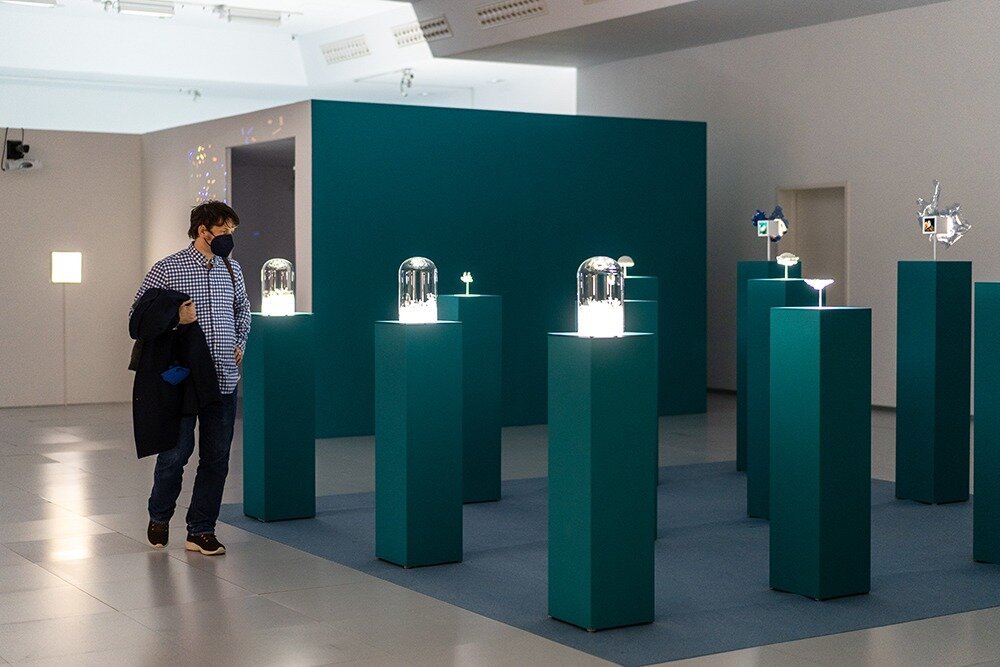




The pervasiveness of the creative use of Artificial Intelligence. In dialogue with Ennio Bianco #2
Our ‘Automat und Mensch’ exhibition has been recently featured in the brilliant article ‘The pervasiveness of the creative use of Artificial Intelligence. In dialogue with Ennio Bianco #2’ on the italian platform arte.go.
Ennio Bianco talks about AI Art, starting from what it really is, how it ‘approached’ the Contemporary Art system and how it’s developing. Artists featured include David Young and his ‘Learning Nature’ series, Sougwen Chung, Lauren Lee McCarthy and many more.
We invite you to read the full article here (original version available only in Italian).
New York Times "The Lasting Lessons of John Conway’s Game of Life" by Siobhan Roberts
New York Times publishes an article ‘The Lasting Lessons of John Conway’s Game of Life’ by Siobhan Roberts feat. artworks by generative artist Kjetil Golid, who is also a part of the ongoing art exhibition Game of Life-emergence in generative art at Kate Vass Galerie.
Fifty years on, the mathematician’s best known (and, to him, least favourite) creation theory ‘Game of life’ confirms that “uncertainty is the only certainty.”
Read full article here: https://www.nytimes.com/2020/12/28/science/math-conway-game-of-life.html
Kate Vass Galerie featured in Jing Culture & Commerce
Might Blockchain Technology Revitalize the Art Market?
by Victoria Stapley-Brown | January 1, 2021
The boom of the crypto art market in 2020 bodes well for the growing ties between art and blockchain technology. Image: Shutterstock
The intertwining of art and blockchain technology has been underway for years. But with a pandemic fallout that has dramatically impacted institutions and decimated artists’ income, that relationship has grown and thrived in 2020 — providing digital artists a much-needed avenue to present and sell their creations, and collectors an innovative way to discover art. As our world grows increasingly virtual, this surge of the crypto art market should come as no surprise.
Read Full Article HERE.
A Platform-Agnostic ERC-1155 NFT Contract for Artists
An exercise in throttling the potential of an exciting protocol to do just what I wanted.
by Kevin Abosch, January 4th 2021.
My first non-fungible tokens, NFT’s $YLAMBO & $MDAV, created March 15, 2018 & March 27, 2018 respectively, were each unique works represented by indivisible ERC-20 tokens. Almost three years later the NFT landscape for artists is robust with numerous platforms dedicated to the management and marketing/sales of NFT artworks and collectibles (SuperRare, OpenSea, Rarible, KnownOrigin, Portion, Enjin, etc). Thousands of artists across the globe have chosen to present their work in NFT form. For artists who might be looking for a platform-agnostic option (your NFT not tied inextricably to a particular platform) and to save a bit of money on ETH gas when transferring multiple tokens, my approach might appeal to you.
A recent project led me to consider how I would produce an edition of NFT artworks today and I was faced with the decision of which protocol to use, the de facto NFT protocol ERC-721, or the newer kid on the block, ERC-1155. The latter’s development, which I have followed for the past couple years, seemed more elegant and with greater functionality. But upon its recent progression to final status (congrats to: Witek Radomski, CTO of Enjin), many of the popular NFT platforms and crypto-wallets have yet to integrate the protocol (this will change very soon).
Continue reading full article HERE.
暗号戦士 / CRYPTOSENSHI LIMITED EDITION CRYPTOSENSHI NFT ARTWORKS BY WORLD RENOWNED CONCEPTUAL ARTIST KEVIN ABOSCH
TOKYO, Japan - World-renowned conceptual artist Kevin Abosch (kevinabosch.com) is the creative director for Japanese anime/manga brand CRYPTOSENSHI. Coinciding with the public announcement of the manga (comic book) which will be released Spring 2021, Abosch has created two limited edition digital artworks in the form of NFT(Non-fungible token) on the blockchain.
The two artworks “Impossible” and “Reigai” are both editions of 20 and are available through Kate Vass Galerie (katevassgalerie.com) in Zurich, Switzerland.
Abosch is one of the pioneers in crypto-art and his work has been exhibited in many of the world’s most prestigious museums including The State Hermitage Museum (St Petersburg, Russia), ZKM (Karlsruhe, Germany) & Jeu de Paume (Paris, France).
In February 2018 Abosch’s NFT artwork “Forever Rose” sold for US$1 million with the proceeds going to the RaspberryPI/CoderDojo Foundation. Later in 2018, Abosch neon- sculpture of 42 alphanumerics “Yellow Lambo” sold for US$450,000, more than the cost of a new Lamborghini Aventador motor car.
As creative director of CRYPTOSENSHI, Abosch is responsible for the development of the characters and artistic direction of the brand’s anime and manga departments.
ABOUT CRYPTOSENSHI
CRYPTOSENSHI (暗号戦士, pronounced “Ango-senshi” in Japanese) are cryptographic warriors that battle in the digital realm while a proxy war takes place in the “real world.”
Abosch explains: “We are living in a world in which truth can be subverted by those leveraging technology to weaponize data — Humans with the help of benevolent AI are in the midst of a war to mitigate the deleterious effects of disinformation. It’s epic, it’s romantic and it’s our future. Cryptosenshi are heroes that empower us to find a truth, even if it’s fleeting.”
PRESS ENQUIRIES: press@cryptosenshi.com
CRYPTOSENSHI.COM

